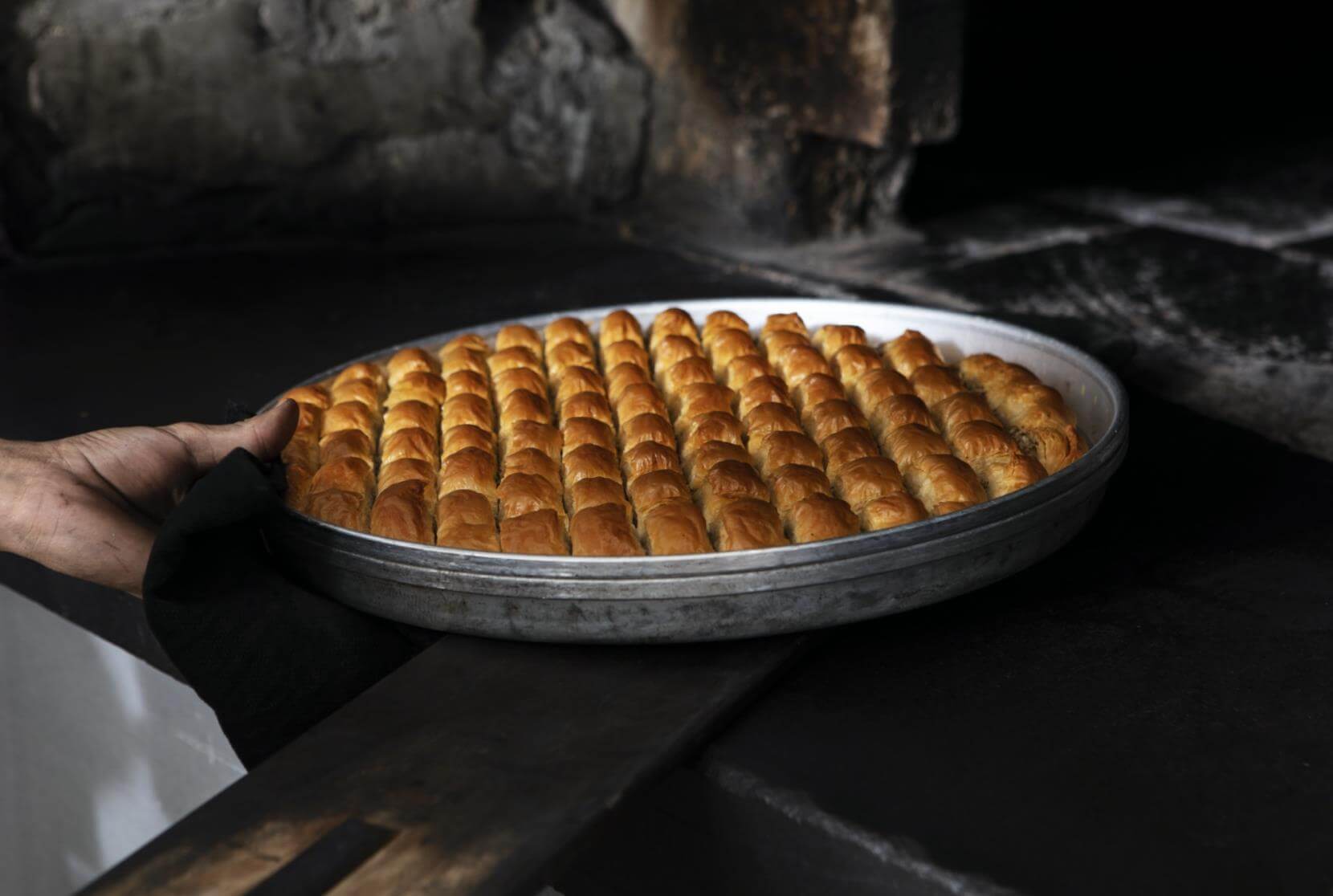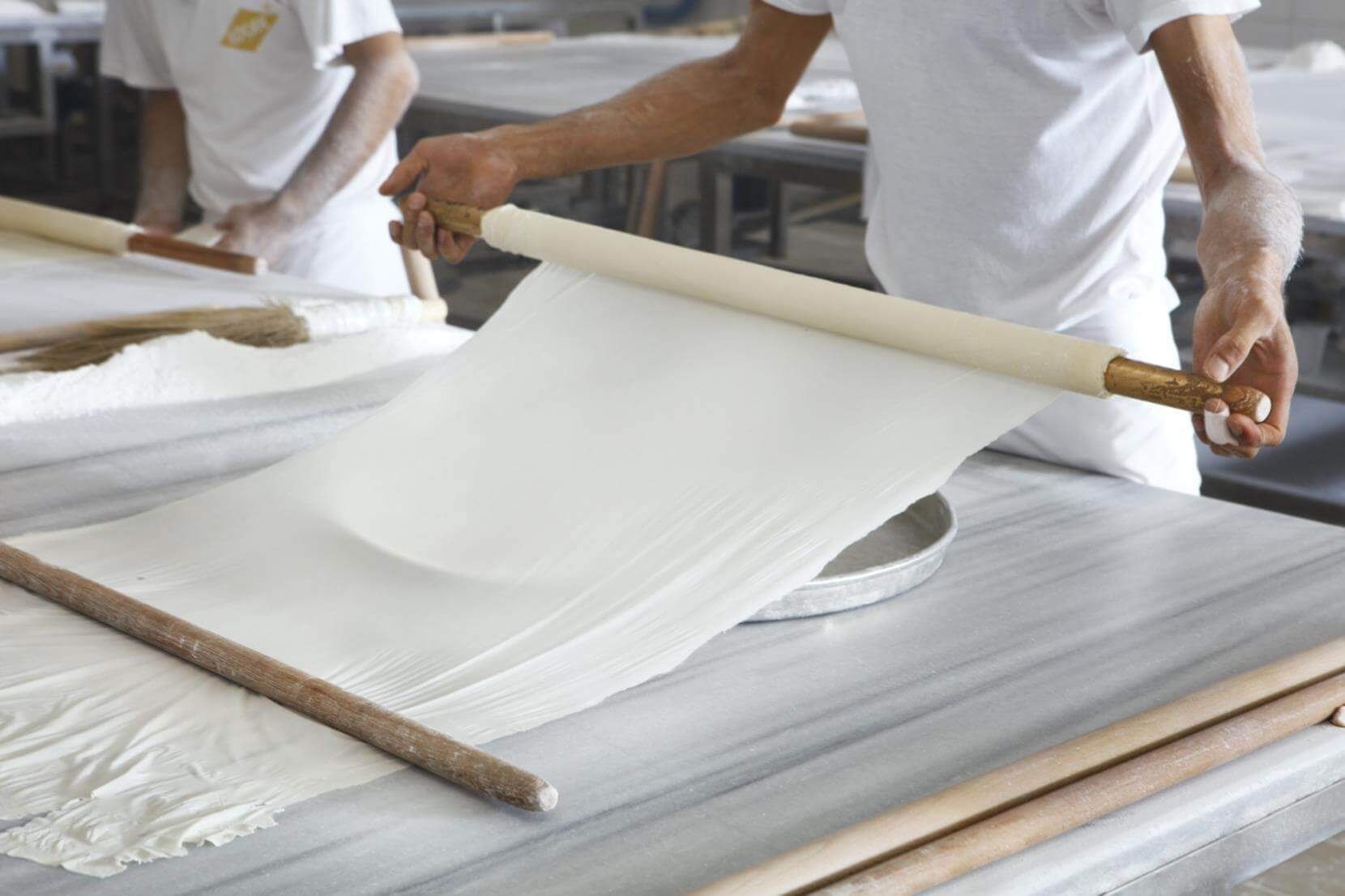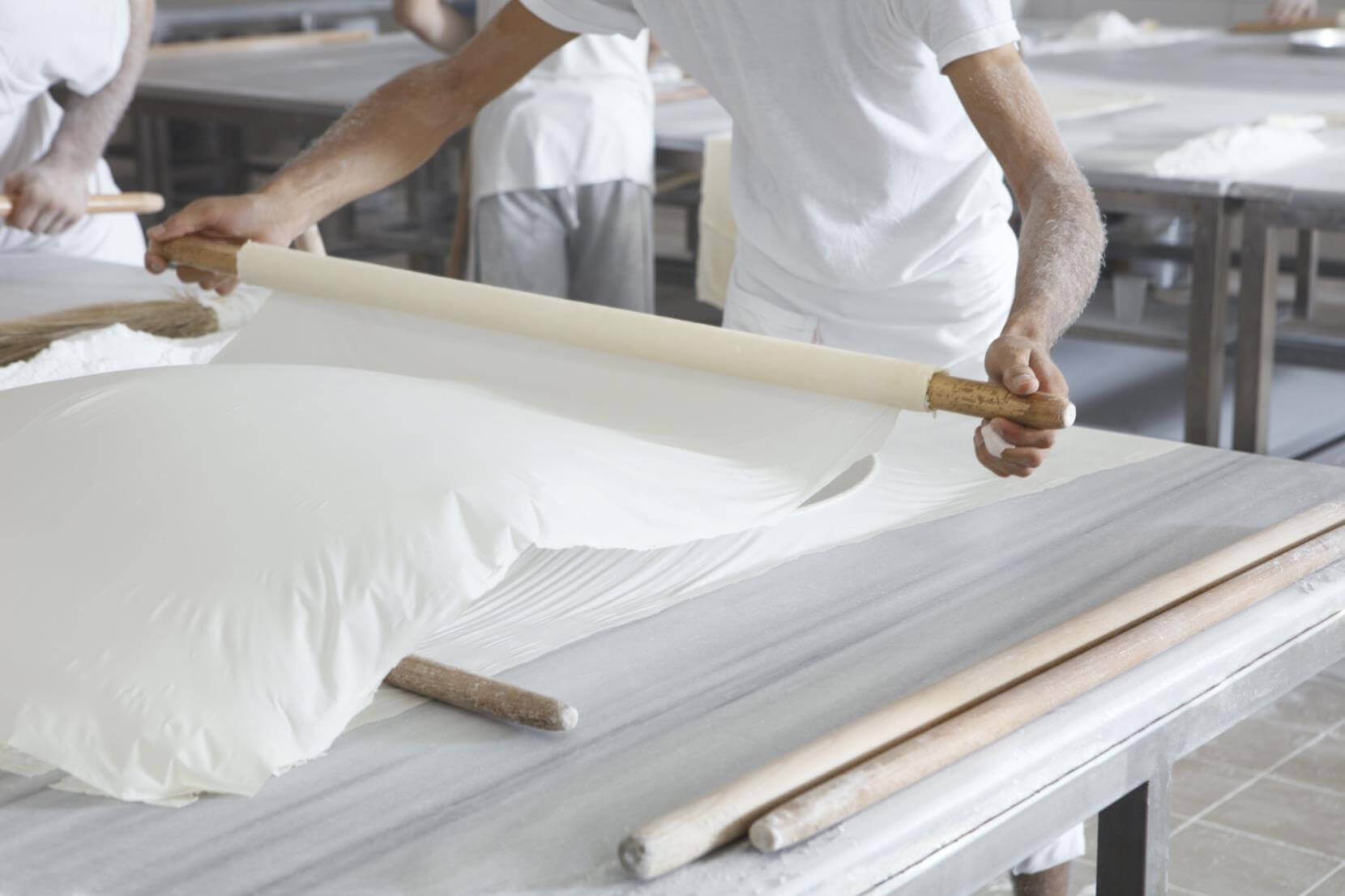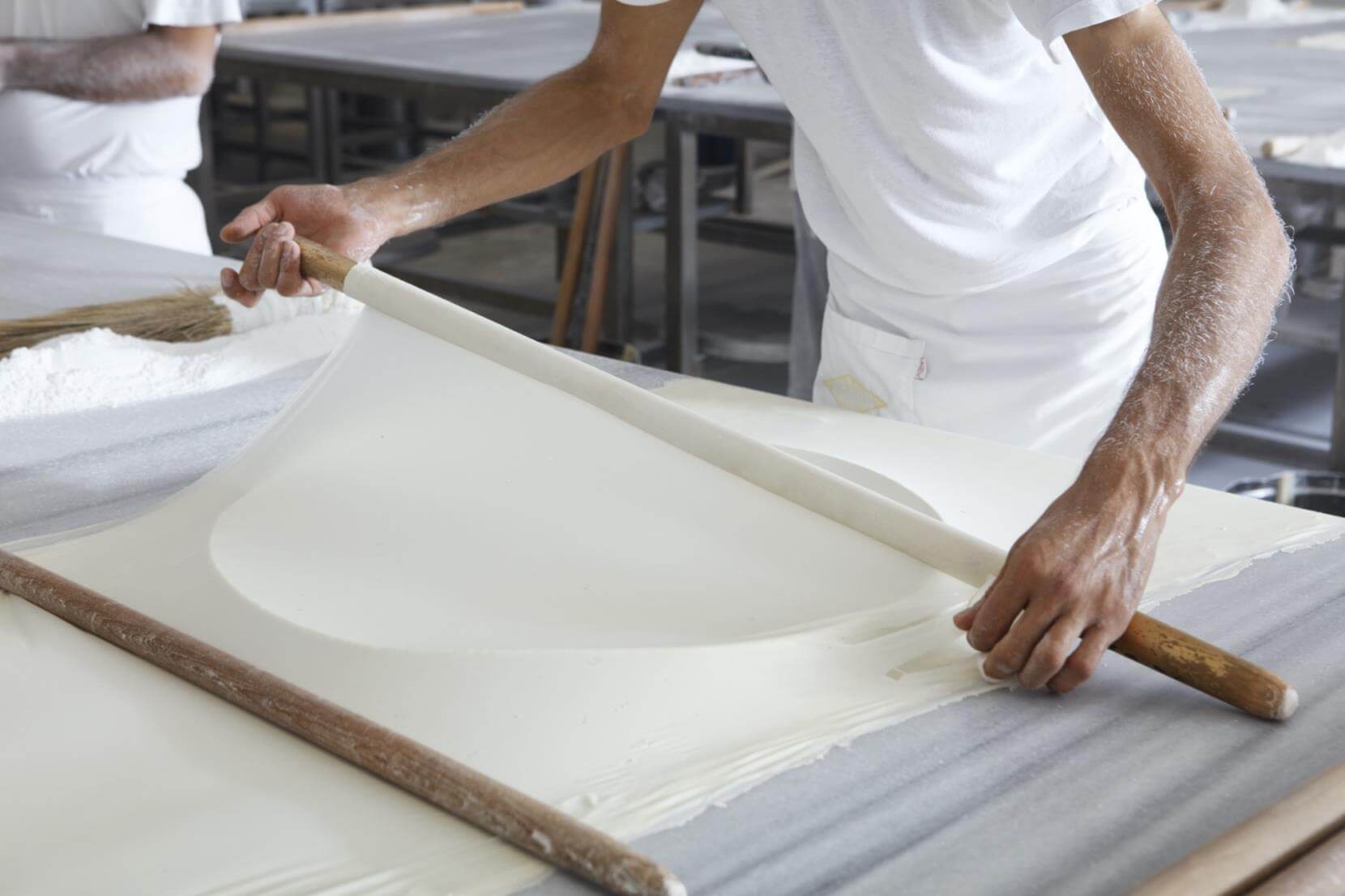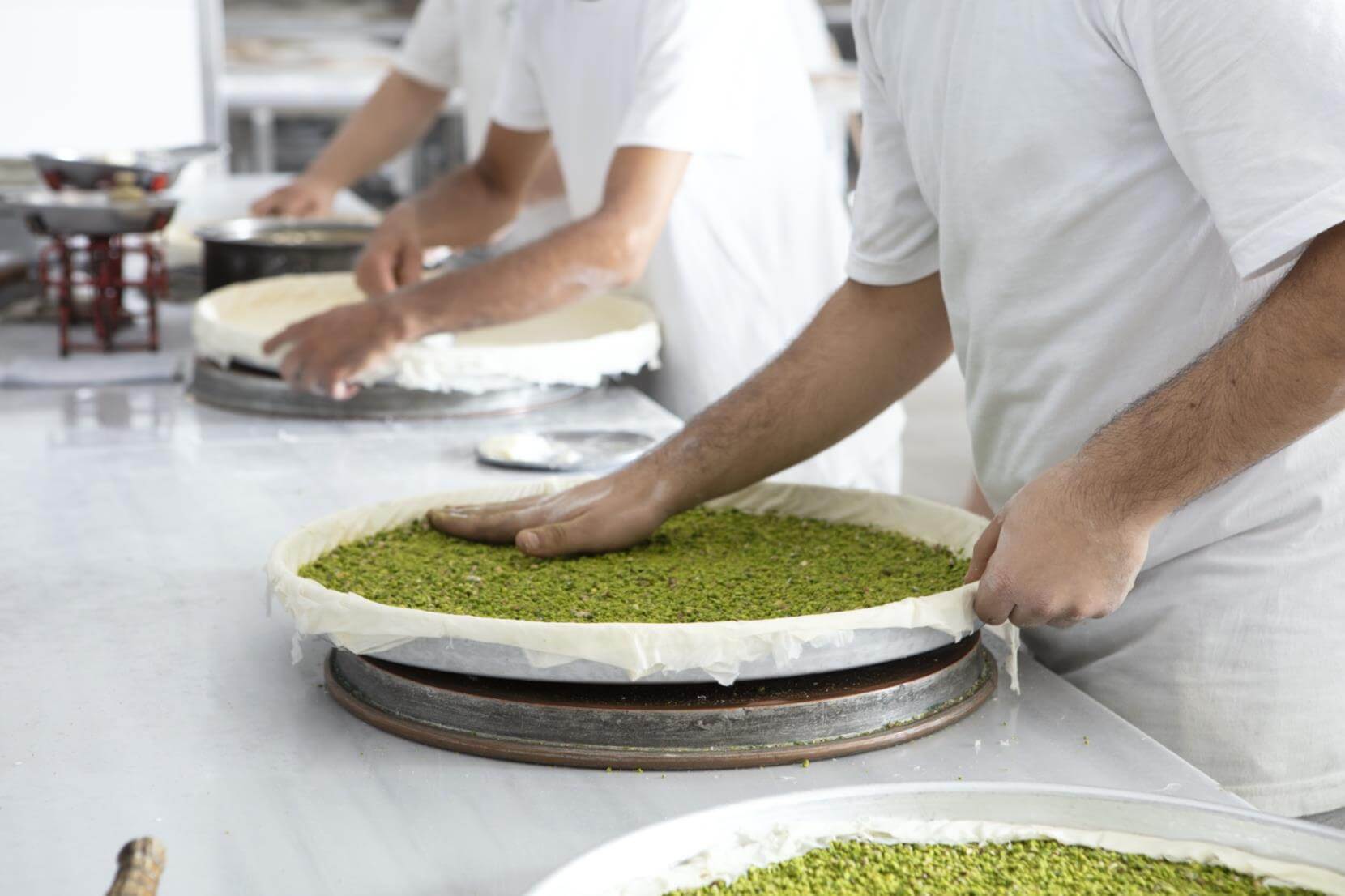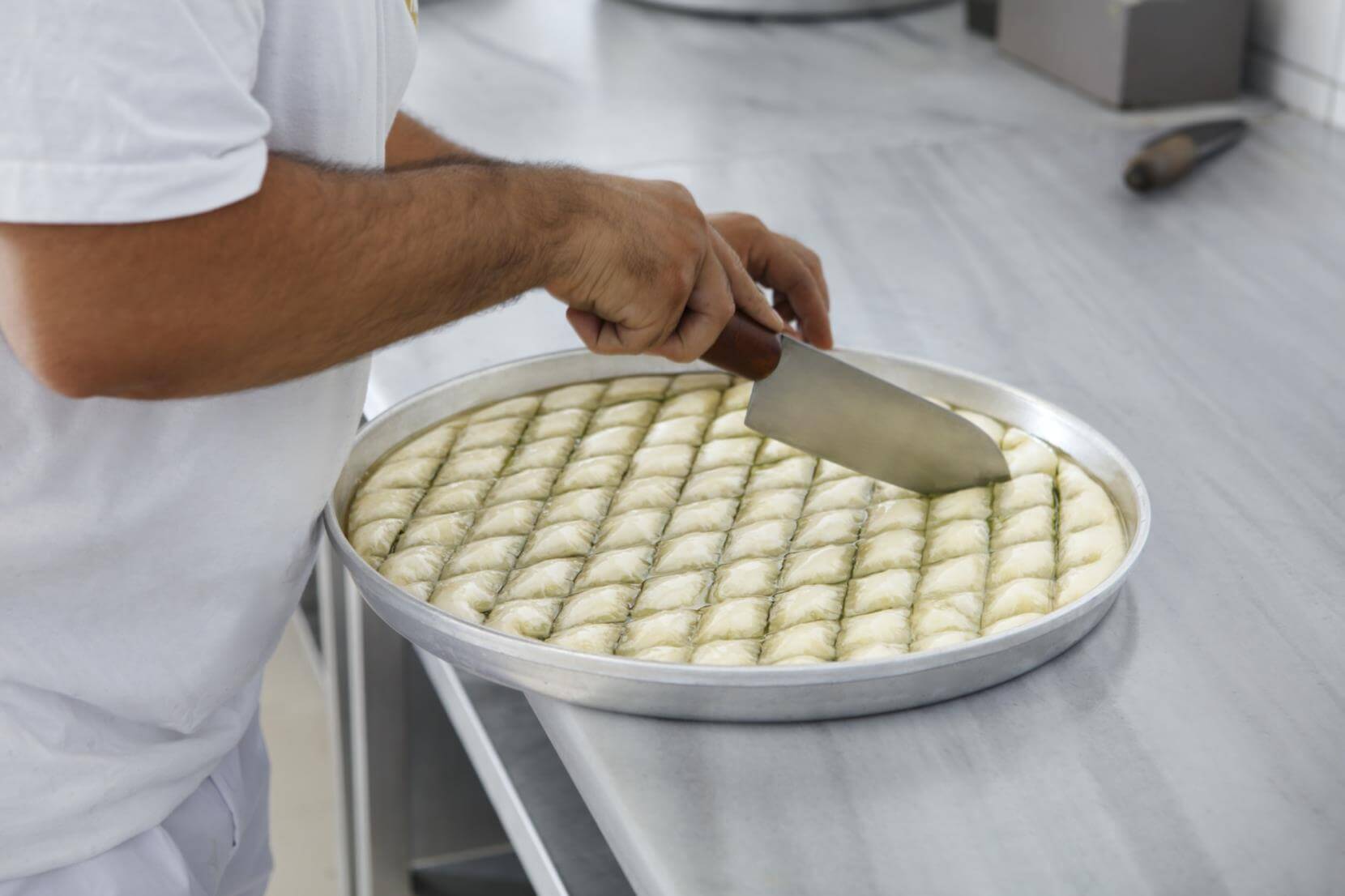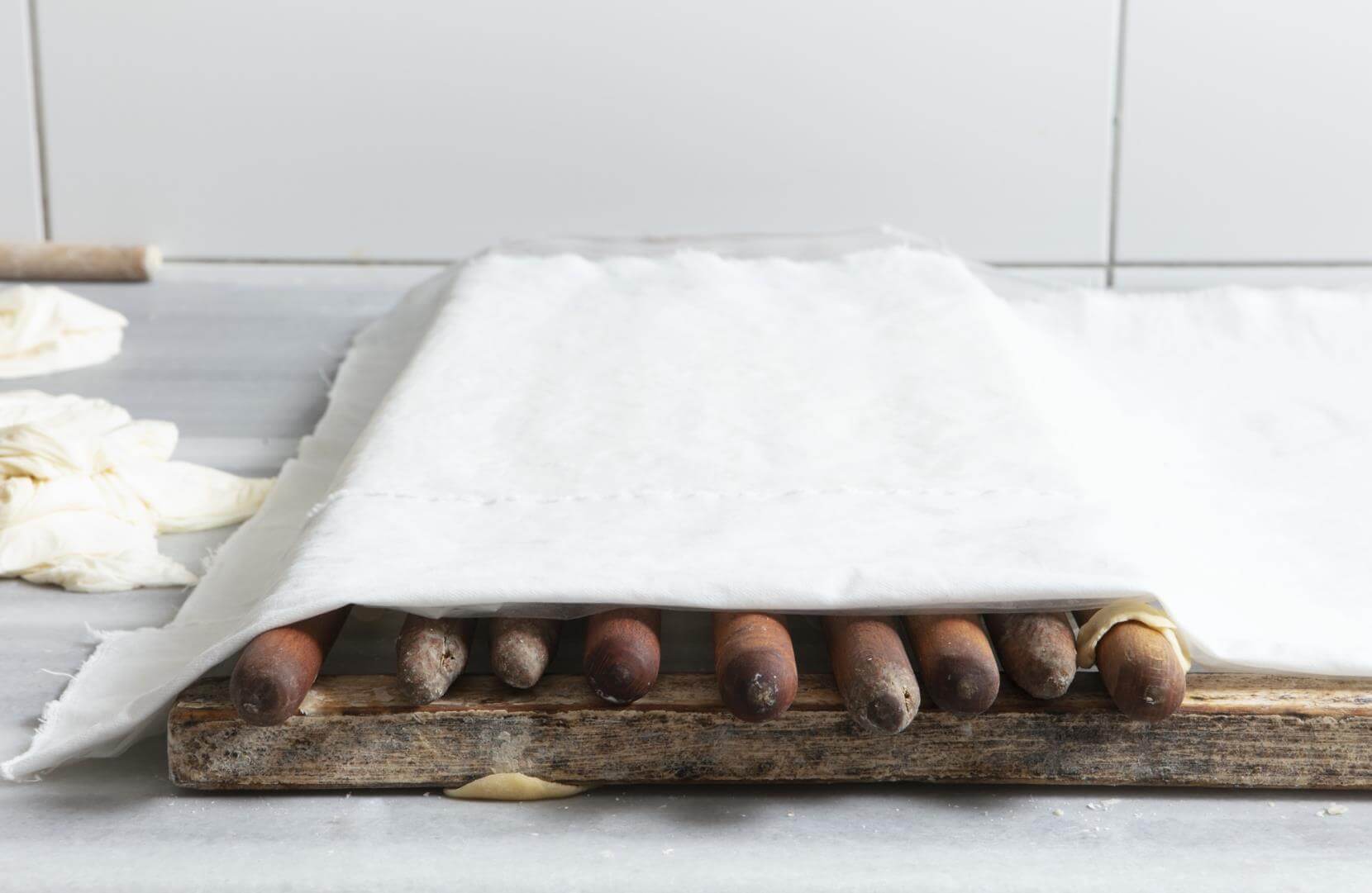Secrets of Baklava
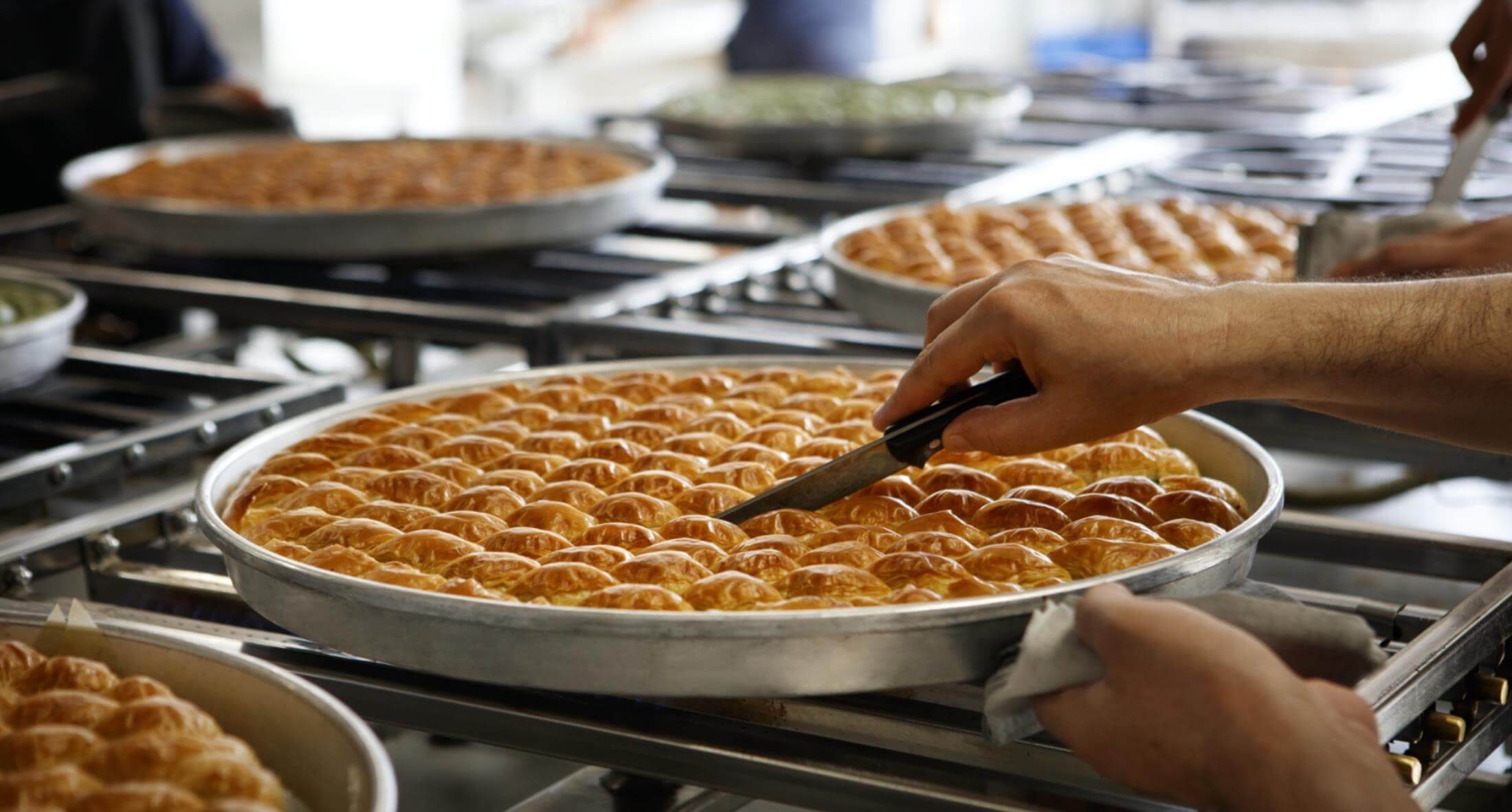
Baklava, which has been one of the most popular flavors of traditional cuisine since 1473, was served in palaces or on special occasions such as festivities, invitations and banquets during the Ottoman Period. Today, the most beautiful is undoubtedly the baklava you can eat in Gaziantep; Pistachio, walnut, dried and normally made in different ways. Of course, such a dessert, which is difficult to make, has its own way of eating. Baklava masters consider not eating it properly as disrespect for dessert. So how should a good baklava be?
The secret is in the thin dough!
In the Ottoman Empire, when choosing the cooks to enter the kitchen, they had baklava made. The cook, who successfully passed the baklava exam, was taken to the kitchen. Rolling the thin dough to cover the entire tray is the most important criterion of baklava mastery. Of course, the quality of the dough is determined by the flour used. Baklava dough made with quality flour opens more easily, does not tear, does not stick. If the baklava dough is not of equal thickness, it will not be delicious.
Light baklava…
Of course, it is also important after the preparation stage of the baklava. The quality, syrup and mortar of the butter used are as important as the lightness of the dessert. Light baklava does not burn the stomach, does not make you want to drink water and does not burn your throat. The dough is golden yellow and crispy.
Etiquette of eating baklava..
Using cutlery while eating baklava breaks the dessert and sticks to the dough. Therefore, eating baklava by hand is the primary condition. After taking it in your hand, turn the baklava over and bite the base dough by sticking it to your palate. You must have smelled butter. By eating baklava this way, you can taste each pastry separately. Satisfaction...
